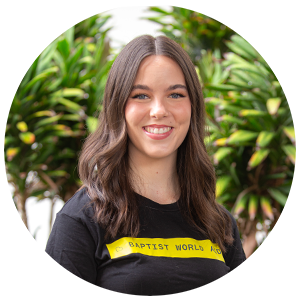Forced Labour Uncovered. What Happens Now?
“Please speak up for me. Stand for me. Never give up.”
This is the plea of Dilnur, as revealed by ABC’s Four Corners. Dilnur is a nurse and a mother. She is also one of the many individuals being forced to work for textile manufacturers in the Xinjiang province of China. As part of the Communist Party’s persecution of the Uyghur minority group; up to 1 million individuals are being forced to work in factories in exploitative circumstances, after being rounded up and incarcerated by the Chinese regime.
The documentary was a powerful reminder of the scourge of forced labour in our world. The nefarious use of people for profit is a reality that we cannot escape. Not least of all because we are intimately connected to it through the products that we use and consume. There’s a reported 24.9 million people trapped in forced labour globally Two thirds of this group are in same region where the majority of the world’s garment production takes place: the Asia Pacific. Instances of forced labour have been documented at every stage of the global fashion industry supply chain. This is from cotton farms, to fabric mills, to final-stage factories.
The risks of forced labour in the garment supply have been well documented. But, on Monday night, Four Corners reminded us once again just how connected we are to this issue… and importantly, these workers.
The documentary revealed that prominent brands sold in Australia use cotton sourced from the Xinjiang region. Brands including Cotton On, Target, H&M, and Jeanswest,
Which begs the question, ‘What happens now?’.
What Happens For Companies?
There has been a mixed response to the latest reports from Australian brands.
There are responsive companies, like Cotton On and Target. Responsive companies have begun investigating relationships with their suppliers and factories in the region. This is a positive first step and demonstrates those brand’s willingness to investigate and remediate instances of forced labour where appropriate. This is a mark of an effective labour rights management system. These brands should be commended for acknowledging the need for further investigation.
Then there are the brands that deny forced labour is occurring in their operations. These brands knowingly source cotton from Xinjiang. However, they feel confident enough in their policies and procedures to not investigate any further. Forced labour can be pervasive and clandestine. So, these brands should be actively investigating and auditing their suppliers, before they boldly claim that forced labour is not occurring in their operations.
And then there are apathetic brands. These brands cannot ‘rule out’ the possibility of their products coming from Xinjiang. However, it appears that they will be taking no further action to investigate or address this issue. Given the discovered risk of forced labour in this particular location; it is unconscionable that a brand would be so unwilling to trace their suppliers and review their supply chain.
What Happens For Consumers?
The ‘what now?’ for us, is to take up Dilnur’s plea… to speak up, stand up, and never give up. It is our role as conscious consumers and advocates to amplify the voices of workers like Dilnur, and demand more from the companies we purchase from.
For those companies that are responsive, thank them for their willingness to be transparent about where their clothes are coming from, and encourage them in their efforts to investigate and remediate potential instances of forced labour. These companies should be held accountable to remediating any instances of forced labour that may be uncovered during their investigations.
And for the companies that are deniers and ‘apathetics’, we should let them know that we demand better. That it is unacceptable to not know and/or not care who is making their products and the circumstances under which they are being made.
Here’s What You Can Do
This latest report of forced labour in the garment supply chain is symptomatic of an industry that, for too long, has ignored the rights and wellbeing of its workers. But together, as companies, consumers, and civil society we can amplify those voices and work together to see an industry built on empowerment rather than exploitation.
If you’d like to take action, we’d suggest you contact your favourite brand on Facebook or over their website by sharing the following:
“I care deeply about the people who make my clothes. I was shocked and saddened to hear of the forced labour occurring in the Xinjiang province of China, an area that many Australian brands source cotton from. I’d like to know what you are doing to ensure that forced labour is not occurring in your supply chain, and how you are working to uphold the rights of workers.”



 Keziah Redelinghuys,
Keziah Redelinghuys,
